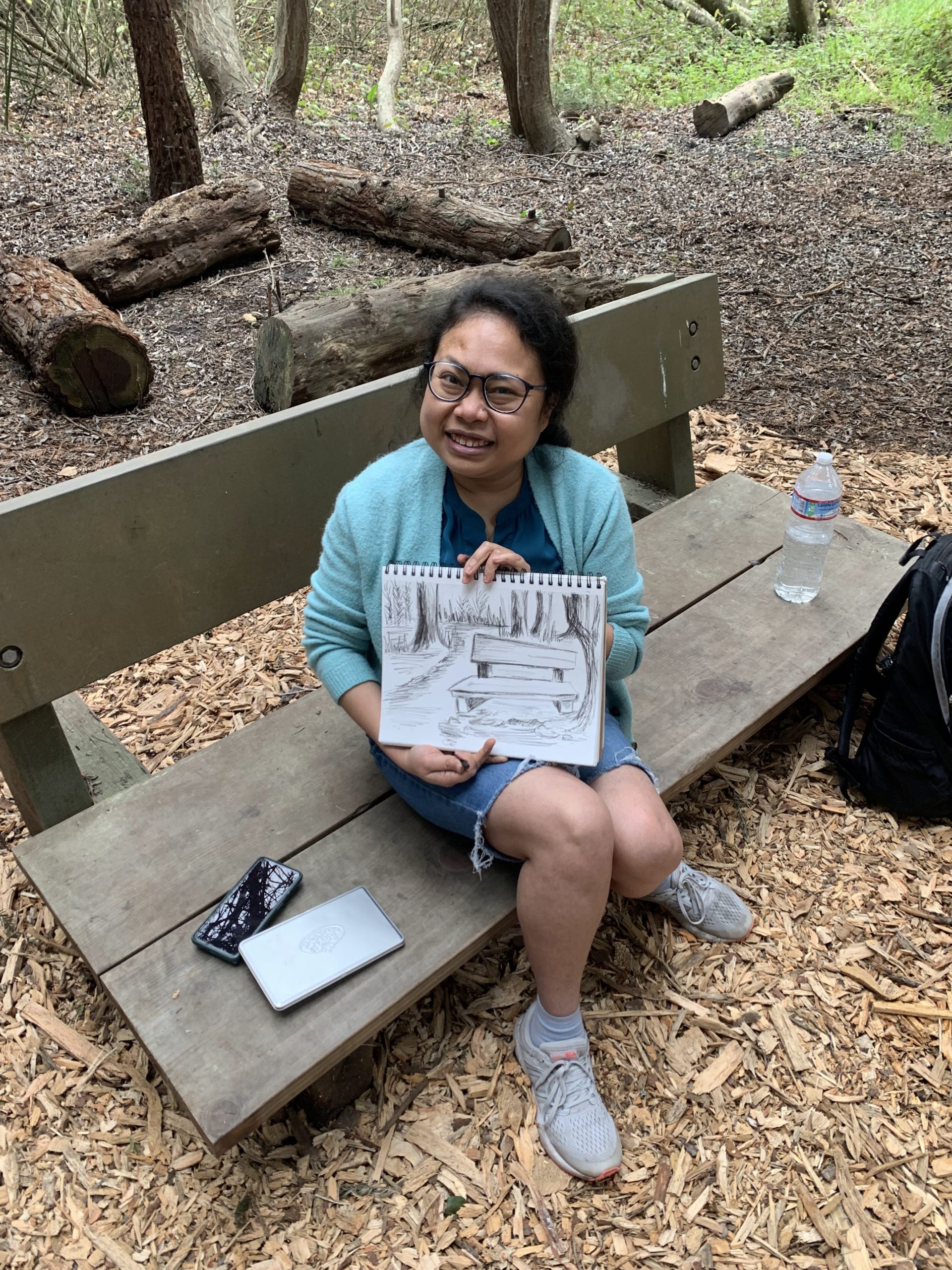 Having spent a lot of her PhD studies doing research at the ALS, Sintu Rongpipi knows that synchrotron characterization brings her moments of immense joy. Find out what she’s characterizing now as well as her secret talents.
Having spent a lot of her PhD studies doing research at the ALS, Sintu Rongpipi knows that synchrotron characterization brings her moments of immense joy. Find out what she’s characterizing now as well as her secret talents.
What path led you to the ALS?
I was born and brought up in the northeastern part of India in a state called Assam. I came to the US in 2016 to start my PhD program at Penn State University in the department of chemical engineering. I’ve been coming for beamtime at the ALS since my first year of grad school (spring 2017) and probably spent almost half of my PhD in the Bay Area, working at ALS and SLAC.
I did my undergrad in chemical engineering and before starting grad school, I had no clue about this entire field. I didn’t know what synchrotron characterization was. At the beginning of grad school, we went to different professors and talked to them about the projects we were interested in. So that year my advisor, Enrique Gomez, was offering a project along with Esther Gomez. I really liked his group and the project, looking at plant cell wall systems. I didn’t know much about that in the beginning, so it was challenging, but it was really fun.
Currently, I’m working with Gregory Su at ALS in the scattering group. I’m involved in several projects about different soft material systems, but the focus is trying to understand the relationship between chemistry, structure, and properties of soft materials for applications in energy and water treatment.
The ALS is a great, exciting place for exciting science. And the learning is not only from experiments, but also from the different talks and seminars/webinars that we have here all the time.
What are you excited to work on next?
My grad school experience helped me appreciate the capabilities of synchrotron characterization. Plant cell walls are highly heterogeneous and weakly scattering. It used to take me about eight hours to get discernible data from one sample with the table-top x-ray scattering equipment. But when I brought the same sample to the synchrotron, it took me a couple of seconds to get really good scattering data. Being able to relate the data with the plant physiological processes brought me moments of immense joy. At the end of my PhD, I realized I wanted to do more x-ray scattering and characterization, but I wanted to diversify and try material systems outside of just biological materials.
Now, I’m looking at different membranes. One example is ion-conducting membranes, which are used as proton exchange membranes in fuel cells. Another type, polyamide thin films, is used as the selective layer in reverse osmosis membranes. We’re also looking at really interesting materials like bioinspired mussel adhesives. Adhesives in water don’t work, so we’re inspired by how mussels can stick to surfaces even in water. We’re looking at different synthetic materials and trying to compare their morphology to the actual morphology of mussel adhesives.
I like fundamental research. I’m enjoying working at a national lab and am also interested in science communication.
How did you become interested in science communication?
For my PhD research, I was working with the Center for Lignocellulose Structure and Formation (CLSF), a DOE Energy Frontier Research Center (EFRC). Toward the end of my PhD, the center nominated me to serve as an editorial member of the EFRC newsletter. So, for two terms I was involved in proposing ideas for what I wanted to write and peer reviewing others’ ideas and their writing. The representatives from all the EFRCs had different backgrounds, so that was a very good learning experience in toning down the scientific jargon so everyone could understand it. Now, when I try to write, or when I’m presenting a talk, I tend to think, “If I say this, will people understand it better?” I really got interested in science communication, and I want to do more of it.

How are you involved in inclusion, diversity, equity, and accountability (IDEA) efforts at the ALS?
I joined the Career and Professional Development Task Force led by Diane Bryant. The different initiatives they’ve undertaken are very interesting, and the discussions about problems that might arise in career development have been very enlightening. I’m looking forward to participating more!
Do you have any secret talents?
One of my favorite destressing things to do is painting landscapes, portraits, and people doing dance. Apart from that, I spend a lot of time reading for leisure, and I’m also into creative writing—I have a blog that I’m finding difficult to maintain nowadays. I also like baking and cooking.